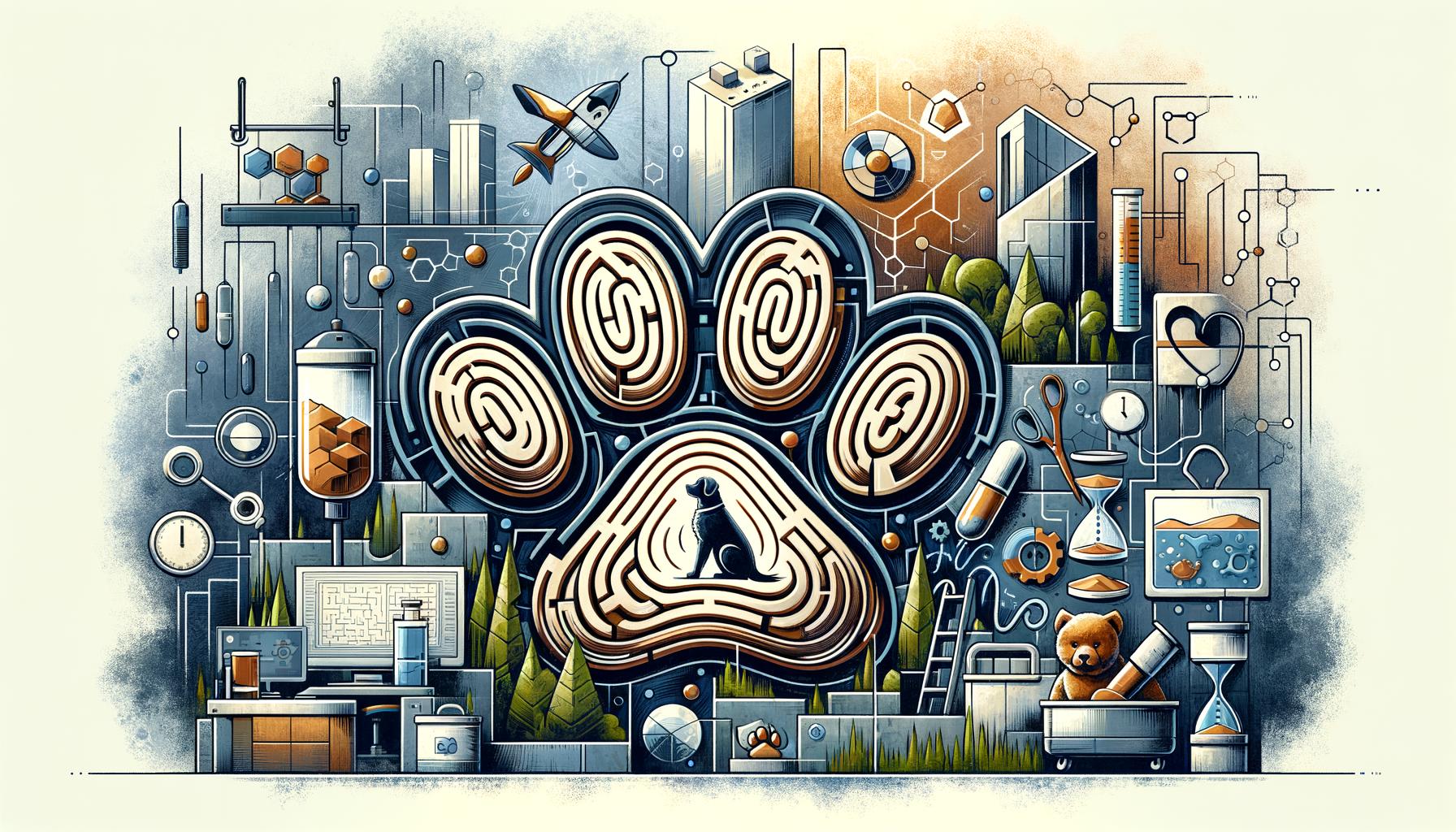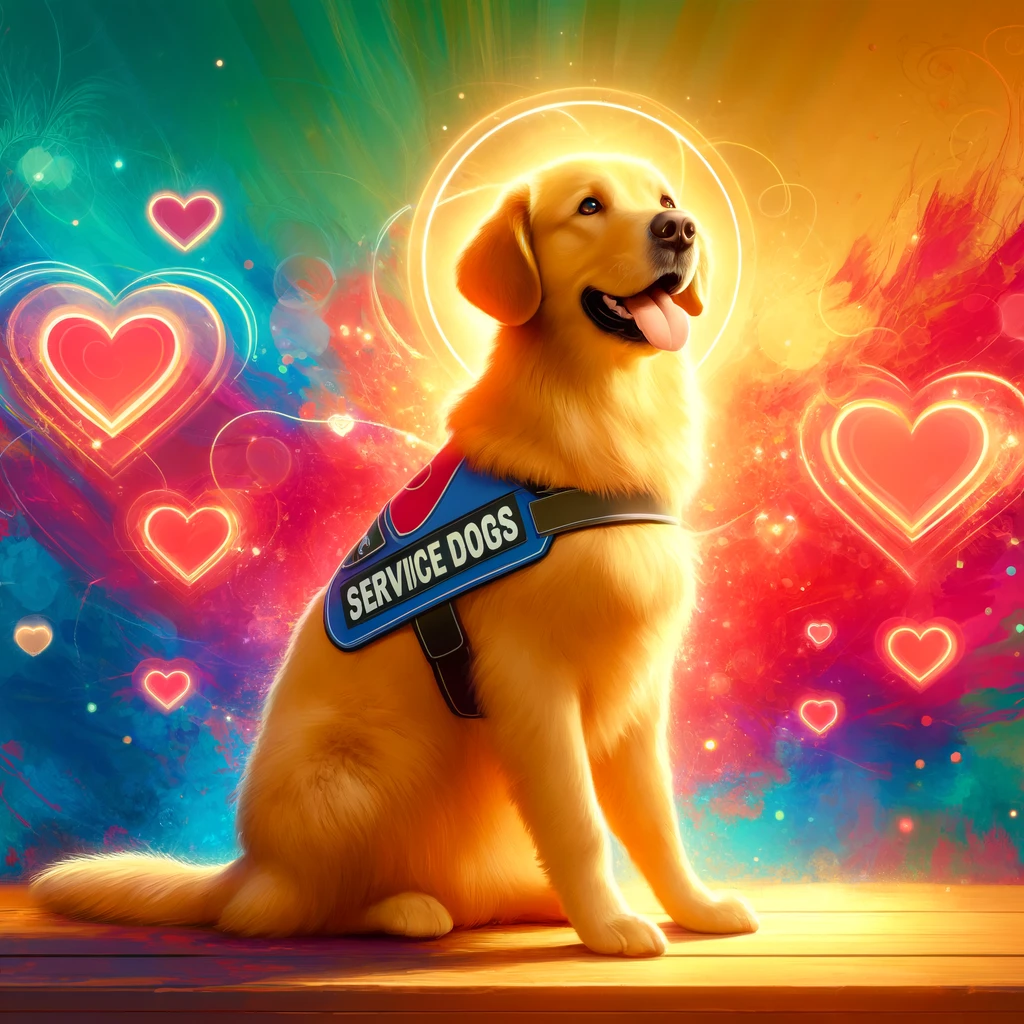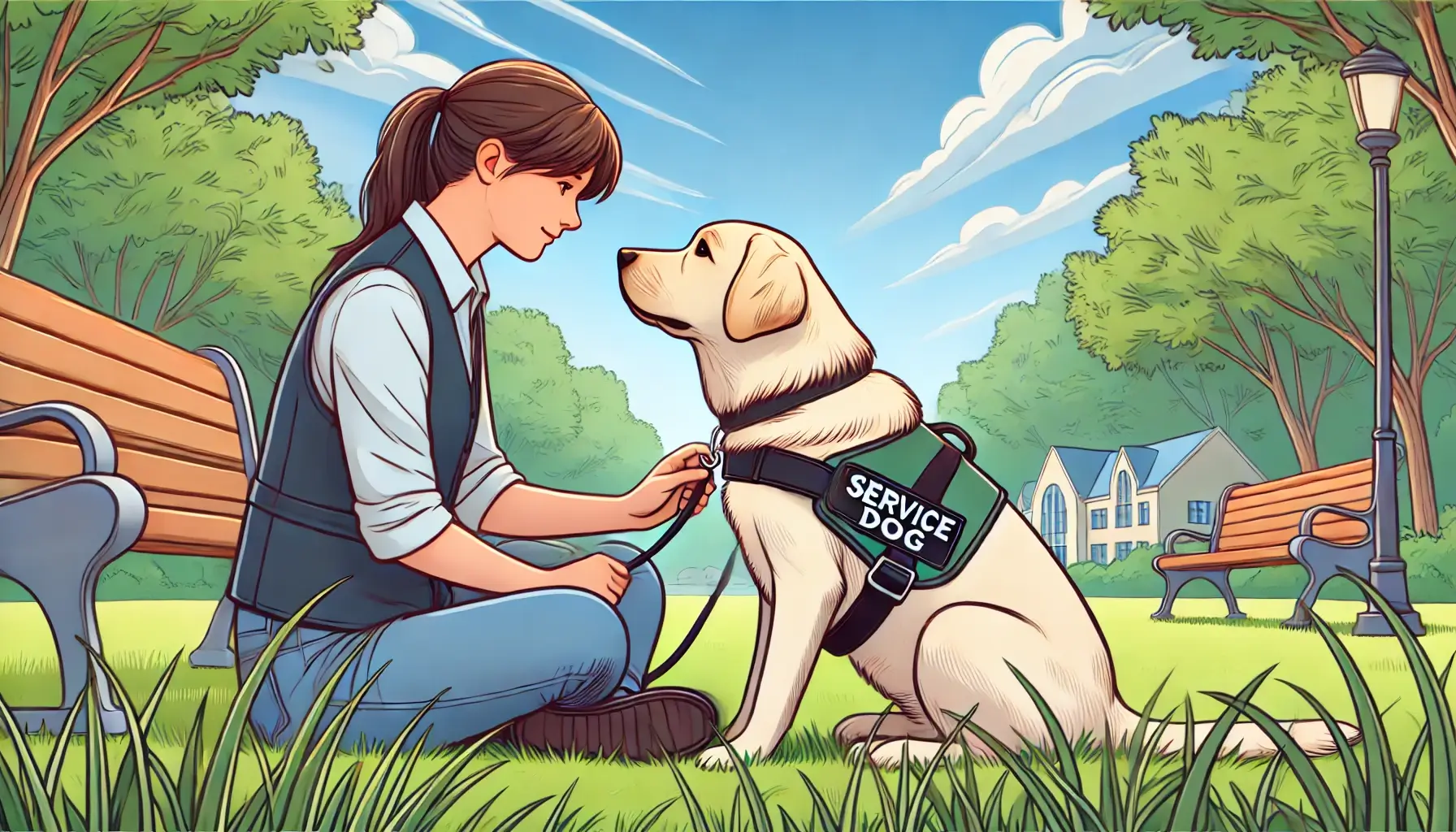Imagine a superhero. No, not one that flies or shoots webs, but one with a wagging tail and soulful eyes that could melt glaciers. This superhero doesn’t wear a cape but carries an extraordinary set of skills, finely honed to assist and protect. Welcome to the world of service dogs—the four-legged wonders making life smoother for those needing extra help. But, like all great superheroes, these dogs don’t just wake up one day with their superpowers. It takes time, dedication, and yes, a significant investment. Training a service dog is a journey sprinkled with challenges, triumphs, and the occasional treat (or two). So, buckle up as we embark on an enlightening trek through the costs, both emotional and financial, of turning a playful pup into a dependable service dog.
Table of Contents
- 1. The Tail Wagging Investments: Unpacking the Costs
- 2. Paws, Patience, and Progress: The Timeline of Service Dog Training
- 3. Beyond Fetch: Skills That Make a Service Dog
- 4. From Wallet Worries to Wondrous Rewards: Financial Aid and Funding Options
- 5. Training Day to Graduation Day: Milestones to Watch Out For
- 6. The Bond Beyond Training: Fostering an Unbreakable Partnership
- The Way Forward
1. The Tail Wagging Investments: Unpacking the Costs
When it comes to training a service dog, think of it as planting a tree. It’s not just about the seed (or pup, in this case) but the earth, water, and sun it needs to thrive. Essentially, it’s an investment in a lifelong companion who’ll provide not just assistance but also undying loyalty and love. Let’s break down the essentials. First off, there’s the cost of the dog itself. Pure breeds often command higher prices, but don’t discount mixed breeds, especially those from shelters who are just as capable and in dire need of a loving home.
Next up, let’s talk training. This isn’t a DIY weekend project; professional guidance is key. The initial investment can be steep, but worth every penny for the expertise you and your future helper will receive. Apart from these, there are also the hidden costs that often slip through the cracks, like health checks, vaccinations, and the all-important gear - think harnesses, leashes, and ID tags suited for a superhero.
Cost Breakdown Overview:
- Puppy Costs: Whether you’re adopting (go you!) or purchasing, the price tags vary. Shelters may ask for a donation, while breeders might want anything from a couple hundred to thousands.
- Training Bills: Strap in for a significant chunk of change here. Professional service dog training programs can range from $10,000 to $25,000, depending on the dog’s role and the program’s length and intensity.
- Healthcare Hustle: Regular vet check-ups, vaccinations, emergency care – it adds up. Consider setting aside a healthcare fund for your furry friend.
- Gear and Accessories: From practical to pretty, your dog will need some kit. Estimate a couple hundred dollars a year.
| Expense Category | Estimated Cost |
|---|---|
| Puppy Purchase/Adoption | $100-$4,000 |
| Training | $10,000-$25,000 |
| Healthcare | $500-$2,000 annually |
| Gear and Accessories | $200-$500 annually |
Investing in a service dog is a blend of dedication, love, and financial planning. Like all great investments, it asks for upfront costs for a payoff that’s priceless – the safety, companionship, and independence a well-trained service dog brings to its handler’s life.
2. Paws, Patience, and Progress: The Timeline of Service Dog Training
Diving into the world of service dog training is like opening a book where patience writes the chapters, and persistence turns the pages. It’s important to understand that training a service dog isn’t a race; it’s more akin to a marathon. Each dog progresses at its own pace, influenced by factors such as breed, age, and temperament. From the initial sit command to navigating crowded spaces with grace, the journey is filled with incremental victories that pave the way to a fully trained service dog. This path is dotted with dedication and sprinkled with setbacks, but it’s profoundly rewarding for both the handler and the furry companion.
To paint a clearer picture, let’s break down the stages of this training odyssey. Think of it as a roadmap, guiding you through the scenic route of development and companionship.
- Assessment & Basic Obedience: It all starts with gauging if the puppy has the right stuff—the temperament, the focus. Basic commands like sit, stay, and come are the foundation. This is where the seeds of trust start sprouting.
- Public Access Training: Venturing out into the world, the duo works on navigating environments filled with distractions, honing the dog’s ability to stay calm and attentive.
- Task-Specific Training: Here’s where things get personal. Depending on the handler’s needs, the dog learns specific tasks, be it opening doors, alerting to specific sounds, or providing stability for mobility.
For those of you who love a good visual, feast your eyes on this simplified timeline:
| Stage | Time Frame |
| Assessment & Basic Obedience | 2-4 months |
| Public Access Training | 4-6 months |
| Task-Specific Training | 5+ months |
Each step on this path adds layers of complexity and strengthens the bond between the handler and their dog. It’s a beautiful journey of growth, filled with moments of triumph and challenges that test resilience. Remember, every service dog is a testament to the power of patience and progress, transforming lives one paw at a time.
3. Beyond Fetch: Skills That Make a Service Dog
Sure thing! Dive into the world beyond the basic fetch, where service dogs showcase their extraordinary skills. These fur heroes are trained to perform tasks that are quite literally life-saving. It’s not just about picking up dropped items (though, let’s be real, that’s super helpful). We’re talking about detecting changes in blood sugar levels for diabetics, providing deep pressure therapy for those with PTSD, or even pulling a wheelchair. The investment in training a service dog is significant, but the payoff? Immense. It’s like having a superhero by your side 24/7.
Let’s break it down, shall we? Some key skills beyond fetch that make an exceptional service dog include:
- Medical Alert: Imagine a dog that can warn you before a seizure hits. Magic? Nope, just intense training.
- Mobility Assistance: From opening doors to helping their partner maintain balance while walking, these dogs are the ultimate helping paw.
- Emotional Support: Not to be confused with therapy dogs, these service dogs provide specific support to their owner for serious emotional conditions by interrupting anxiety attacks or providing tactile stimulation.
| Skill | Description | Impact |
|---|---|---|
| Medical Alert | Detects changes in the owner’s body. | Prevents crises. |
| Mobility Assistance | Helps with physical tasks. | Increases independence. |
| Emotional Support | Assists in emotional regulation. | Improves quality of life. |
In essence, training a service dog goes well beyond basic commands. It’s about empowering individuals with disabilities to lead more independent and safer lives. The skills these dogs learn can be complex and varied, tailored to fit the unique needs of their handler. It’s a journey of patience, dedication, and love that results in a bond unlike any other.
4. From Wallet Worries to Wondrous Rewards: Financial Aid and Funding Options
Let’s face it, training a service dog isn’t a walk in the park—especially when it comes to your wallet. But don’t let the numbers scare you! There’s a treasure trove of resources and financial aid options designed specifically to help you navigate this journey. From nonprofit organizations that offer grants, to specialized funding programs tailored for individuals with disabilities, the financial support landscape is as vast as it is varied. The key? Dive deep, research, and you might just uncover a goldmine of opportunities waiting to ease the burden on your bank account.
Ready to embark on the treasure hunt? Here’s where you can start digging:
- Nonprofit Organizations: Many nonprofits are dedicated to assisting individuals in acquiring service dogs. These can range from general grants to funds specifically earmarked for veterans, children with autism, and more.
- Specialized Funding Programs: Look for government-based or private programs offering financial assistance for those requiring service dogs. It’s all about finding the right fit for your specific circumstances.
- Fundraising and Crowdfunding: Don’t underestimate the power of your community. Platforms like GoFundMe can be a vital resource in rallying support from friends, family, and even strangers.
After all, embarking on the path of training a service dog is an investment in improving quality of life. It’s about transforming challenges into triumphs—a journey well worth the financial planning and effort. So, lace up those boots, get your map ready, and start navigating the world of financial aid and funding with confidence. Your future furry companion’s journey starts here!
5. Training Day to Graduation Day: Milestones to Watch Out For
Embarking on the journey of training a service dog is much like rolling out a red carpet that leads straight to an arena of personal growth, challenges, and triumphal moments of success. Mistake not, this path is dotted not just with treats and tail wags, but with milestones that mark significant leaps towards the ultimate goal – a well-trained, reliable companion. Here’s a peek into what those stepping stones might look like:
- First Command Triumph: This is the high-five moment when your pup nails their first command. It’s the ‘sit’ that starts it all, setting the tone for your journey ahead.
- Public Access Test Prep: Entering the big leagues now, your dog is prepping for the real world. This includes mastering not freaking out at squirrels and sitting politely in public spaces.
- Task-Specific Training: This phase is where your dog starts learning to perform specific tasks that address your unique needs. It’s personalized, profound, and pretty awesome to witness.
- Graduation Glory: Caps in the air (figuratively for your four-legged grad), this is the day your hard work pays off, and your dog officially earns their ”service dog” badge.
Each milestone, from the kick-off command to the graduation day, encapsulates a journey of mutual learning, patience, and perseverance. It’s not just about teaching a dog new tricks but about crafting a bond that transcends the ordinary. It won’t always be a walk in the park (though there will be plenty of those too!), but the milestones along the way make it a remarkable adventure. As you celebrate each achievement, remember, it’s not just about reaching the destination but cherishing the journey.
6. The Bond Beyond Training: Fostering an Unbreakable Partnership
It’s not all about sit, stay, and fetch. When you dive deep into the world of service dog training, you step into a realm where every command and every treat weaves a tighter bond between you and your canine companion. This connection transcends the basics of training—it’s about cultivating a partnership so strong that your dog can sense your needs even before you do. Imagine a bond so deep that with just one look, your furry friend knows it’s time to offer their paw in support or guide you away from overwhelming crowds. This synergy doesn’t just happen; it’s a labor of love and patience, nurtured day by day.
Here’s the scoop on how to foster this unbreakable partnership:
- Confidence through Consistency: Like a dance, every step in training should be in sync. Regular training sessions not just reinforce commands but build a mutual trust and understanding that’s rock solid.
- Understanding the Silent Language: Communication isn’t just verbal. Pay attention to your dog’s body language. The wag of a tail or a perked-up ear speaks volumes about how they’re feeling. In turn, be mindful of your own signals; dogs are incredibly attuned to our body language and emotions.
- Joint Adventures: Shared experiences forge stronger bonds. Whether it’s a serene walk in the park or navigating the hustle and bustle of city streets, every adventure is a stepping stone in your partnership.
Remember, training a service dog is more than commands and cues. It’s about building a friendship where respect and understanding flow both ways. And in this friendship, you’ll find not just a service dog, but a loyal companion for life.
The Way Forward
—
So, you’re embarking on the noble journey of training a service dog. Bravo! The path you’ve chosen is no stroll in the park, but rather a rewarding marathon of patience, dedication, and love. Remember, this venture is not just about unleashing (pun intended) a furry friend’s potential but also about creating a bond that transcends the ordinary. It’s an investment. Not just in time or money, but in life itself.
Here’s a quick recap of what we covered:
- The time commitment necessary for training a service dog from puppyhood to professional.
- Understanding the financial investment, including training sessions, accessories, and unexpected expenses.
- The importance of emotional resilience for both handler and dog during the ups and downs of training.
- The pivotal role of professional guidance, from choosing the right breed to mastering advanced commands.
- Celebrating the small victories and recognizing the immense impact a service dog has on enhancing life’s quality.
As you venture forward, clutch these pearls of wisdom close to your heart. Transforming your pup into a fully-fledged service dog is akin to shaping a raw diamond. It requires effort, yes, but the brilliance it exudes in the end is unparalleled.
Whether you’re at the starting line, midway, or nearing the finish, remember that every step taken is a step closer to a life-enhanced thanks to the unwavering support, love, and companionship of your four-legged companion. Embrace the journey, cherish the milestones, and look forward to the horizon where lives are transformed, one paw at a time.
Go forth, brave souls, with your canine counterparts. Let the world see what we already know – that in the heart of every service dog, lies the spirit of a hero.







Leave a Reply